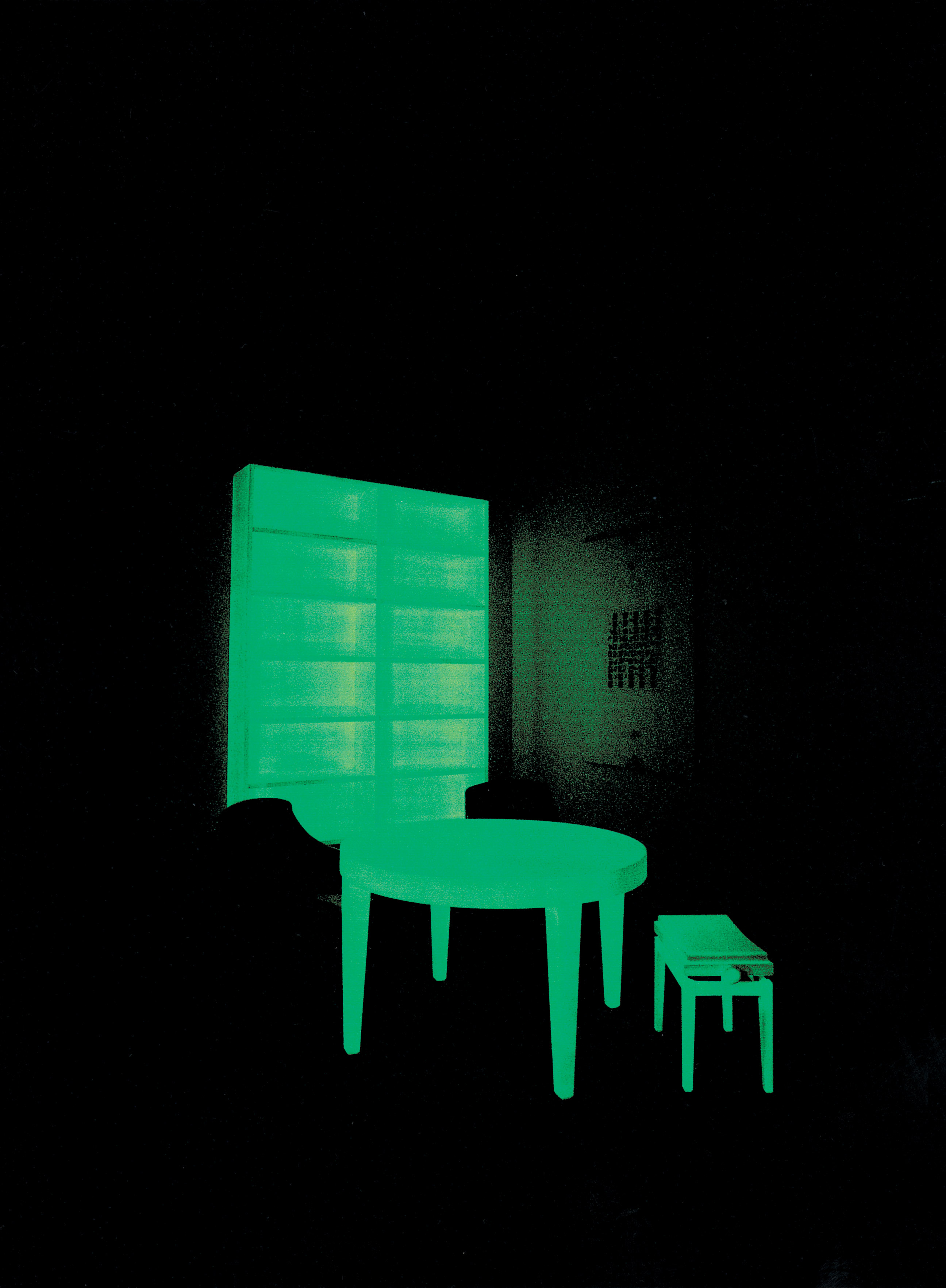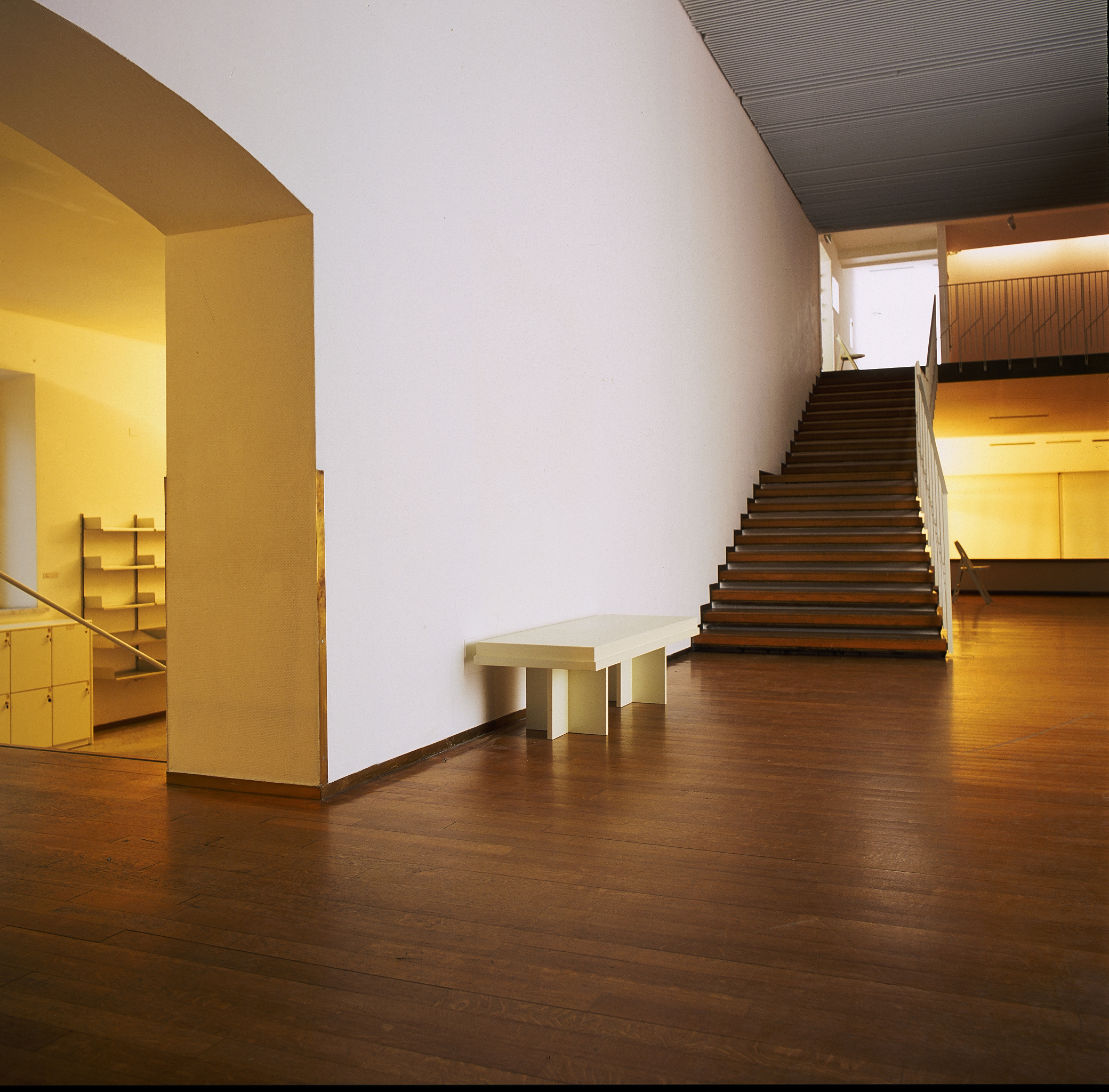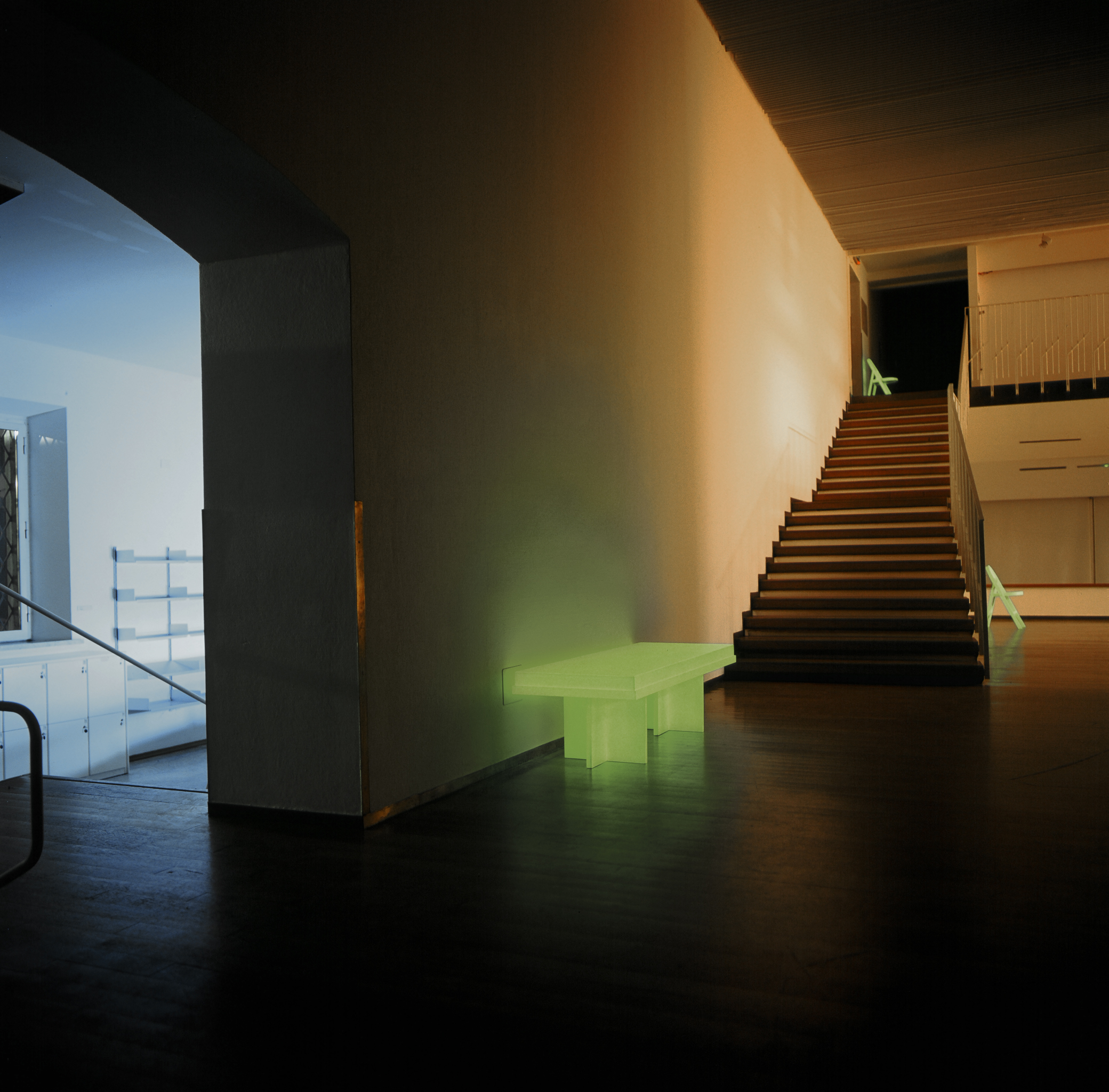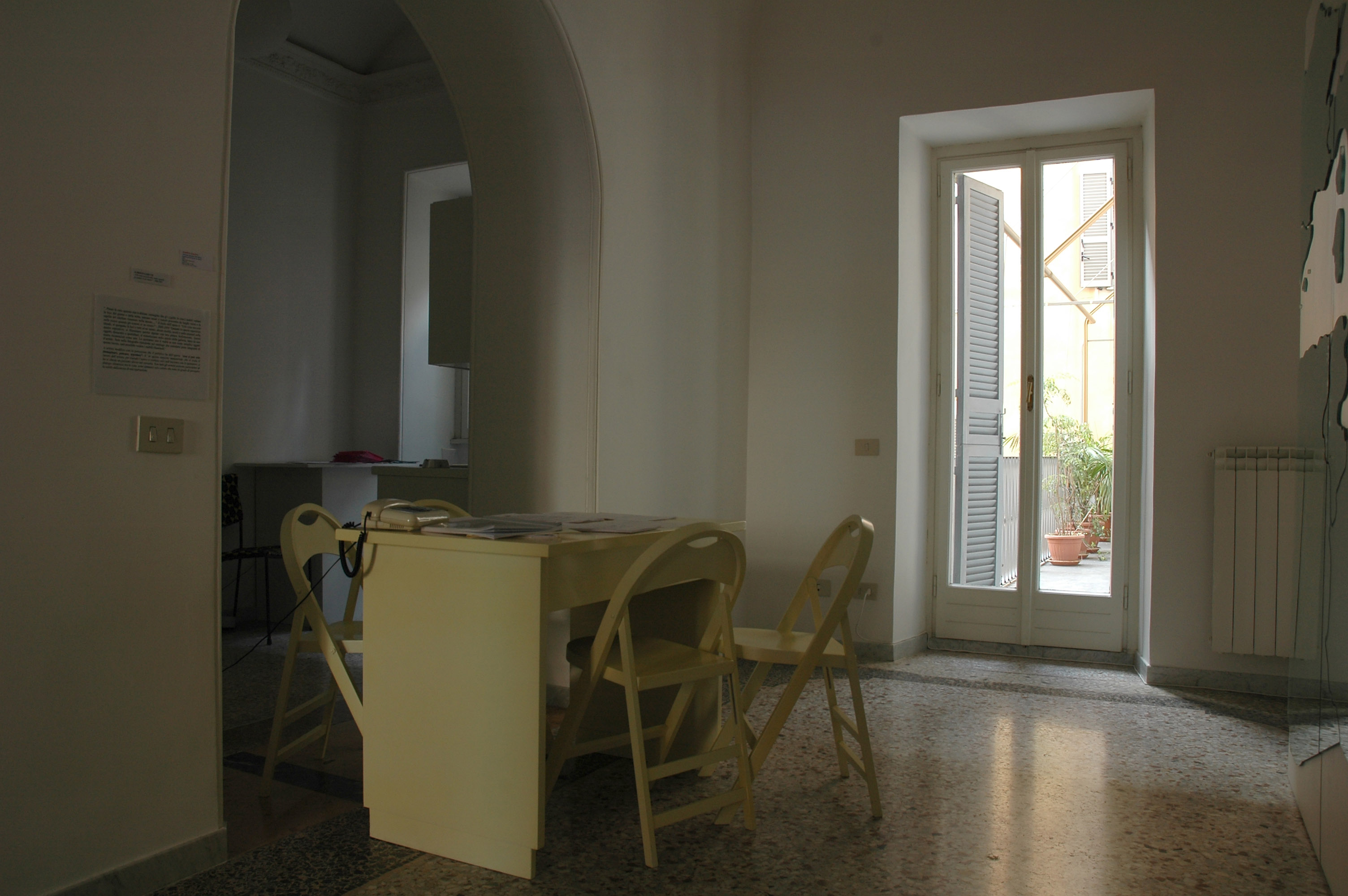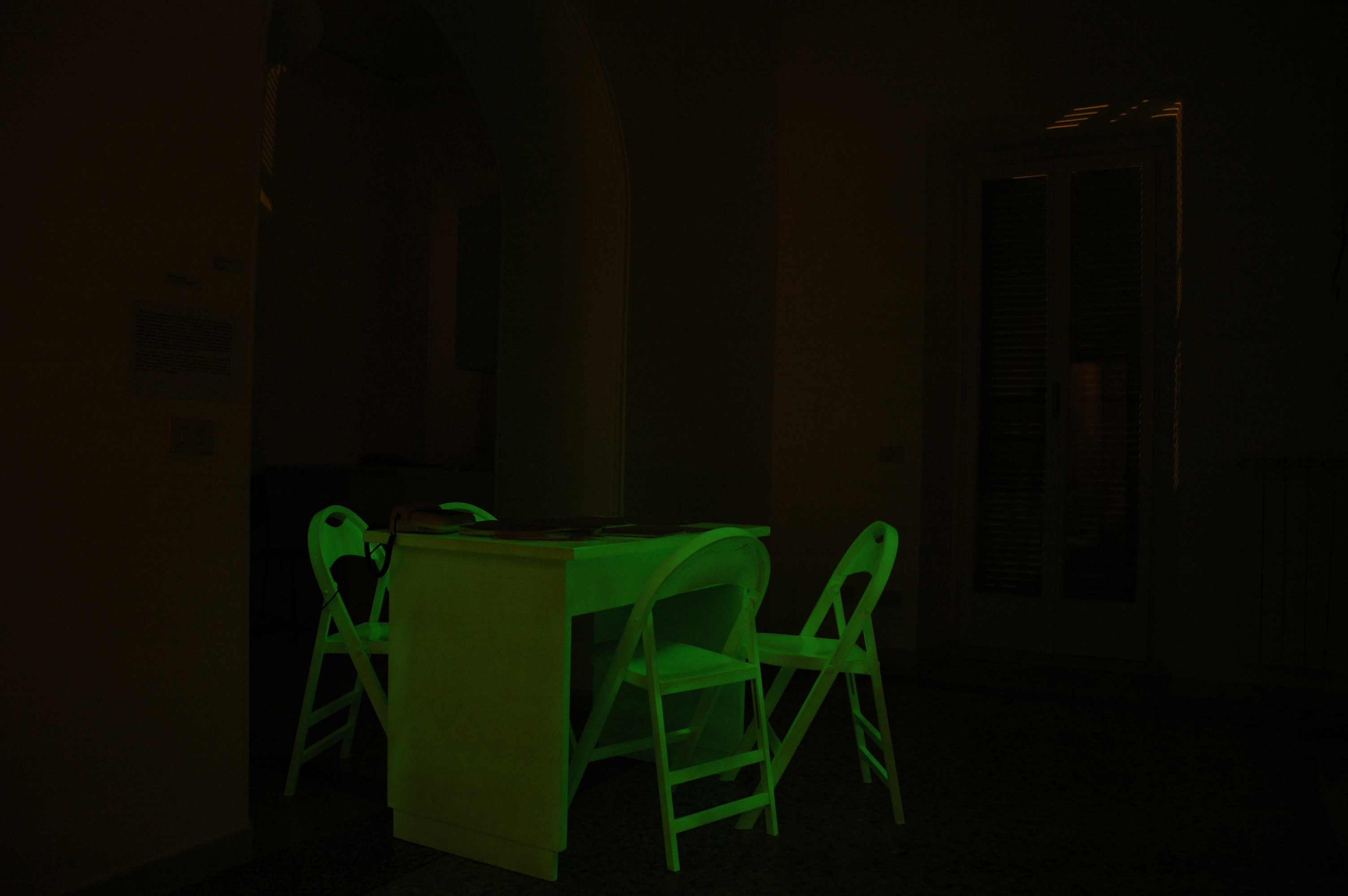2001 – 2023
What happens in rooms when the people have left?
In the work What happens in rooms when the people have left? certain furnishings inside the exhibition space are coated with phosphorescent paint. When the lights have been turned off in the evening, after the place has closed, the furnishings glow. When the exhibition space is open, during regular hours, the furnishings in question are “camouflaged” like all the others, remaining indistinguishable as parts of an art installation. Only photographic documentation, seen as an integral part of the work, allows the visitor to see them when they glow in the dark.
Altering the observer’s perception of the work – it can only be imagined – the artist asks the audience to have faith in the work, but also to make a patient effort to seek it out, in the awareness that this can happen only in the encounter with the gaze of the viewer.
According to the artist, with respect to the context of public projects, where aided by the caption as an activation device it is the work that must move towards the spectator, in the specialized space of art (the museum, the gallery) it is the visitor that must take responsibility for his gaze, and move in an attempt to encounter the work. “The work functions like litmus paper – the artist says – it is hidden in the belly of the museum, silently revealing its weak points and its rhetorical nature. […] It is as if it were developing a process that is the opposite of that of Duchamp… I think that today, in an increasingly ubiquitous, deterritorialized society, the work feels a great urge to escape from the museum; but in the moment in which it returns to reality, it loses its aura. At that point, precisely the spectators and the artist himself, who is the first true spectator, are the ones that can restore its status as art” [Hans Ulrich Obrist, “Alberto Garutti”, in Domus #901, March 2007, p. 116-123].
What happens in rooms when the people have left? can be seen as an evolution of Opera per camera da letto presented at the Hotel Palace in Bologna in 1993. Again in that case, the artist made use of phosphorescence as a way of subtracting the work from the gaze of the viewer and stimulating an intimate, “clandestine” relationship with the work itself.

